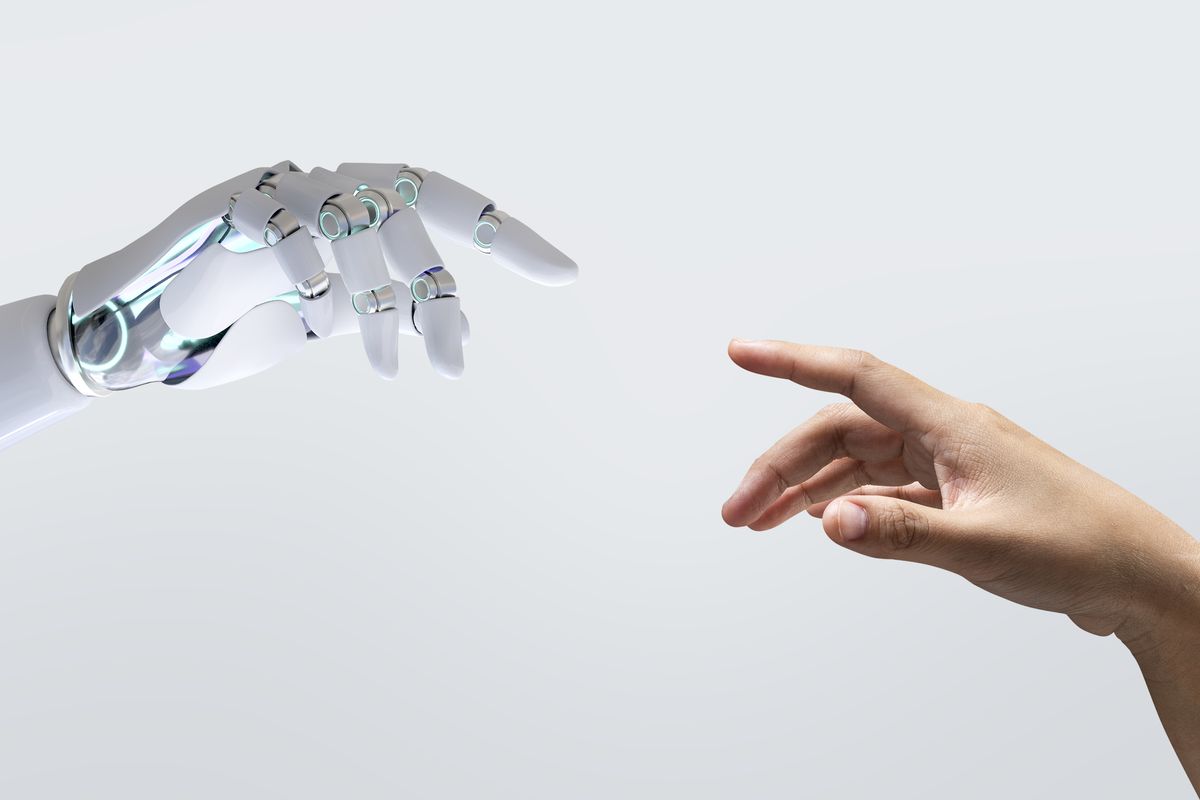Design Thinking human-centered in times of AIWhat have we got that AI does not. Qualities that make us unique

Design Thinking and AI
Chat GPT-4 — like AI software in general — is confined to the digital world. It lives in a world of virtual 0s and 1s. Unfortunately, so are many human activities these days. This is why I think it’s so important to recognize the value of real-world interaction. Then one thing AI can’t disrupt is our analog, in-person connections with others!
As Harvard Professor Arthur C. Brooks summarizes: “Technology that crowds out our real-life interaction with others will lower our well-being and thus must be managed with great care in our lives.”
Not only our well-being is affected. Stress-related overuse of tech and social media is critically high. The flip side of this is a shift to focus on beneficial aspects of our real-world lives, communication, and work.
An important aspect of using the human-centered innovation method of Design Thinking is precisely the focus on real-world qualities and human interaction. In this post, I’ll pull out a few examples of this.
Here is one example: Doing research or interviews, as we call them in Design Thinking.
The so-called “Empathy” or 2. Phase in the Design Thinking process. The Design Thinking team hits the streets and talks to relevant stakeholders (real people) using open-ended questions to identify new insights. Uncovering insights is something AI can’t do.
Why? Because AI connects past dots and generates information it has already been presented with. When you tap into information that isn’t online by speaking about another’s lived experience, you’re uncovering something genuine and original.
This kind of exchange, interview or conversation is not (yet) possible with AI.
People skills still belong to people.
Further thoughts:
Flavia Bleuel, Design Thinker, Head of Professional Development at Hasso Plattner Institute in Potsdam.
AI and Design Thinking (posted in LinkedIn April 2023)
AI applications like Chat GPT are becoming a powerful tool for teams to generate a variety of ideas, high-resolution prototypes and concepts. With AI even a non-expert team has the chance to create high-level solutions simply by asking the right question and giving suitable prompts.
So what do we need the human brain for?
We need the human brain to frame a project, to ask the right questions, and to make decisions. Having a vision and with that understanding and framing problems and requirements will be even more important to make proper use of powerful AI-based ideation.
Redesigning and iterating AI solutions with vision-based what-if-questions and choosing the right prompts to create AI-based ideation will be an exciting new chapter in Design Thinking.
Reach out to me to find ways to create new products with value using human-centered Design Thinking. In a similar vein, I am a qualified and experienced professional coach who can support you in defining your own unique strengths for more confidence and if so desired, your strong personal brand.
Karla Schlaepfer and the awesome 🚀 DesignChange team